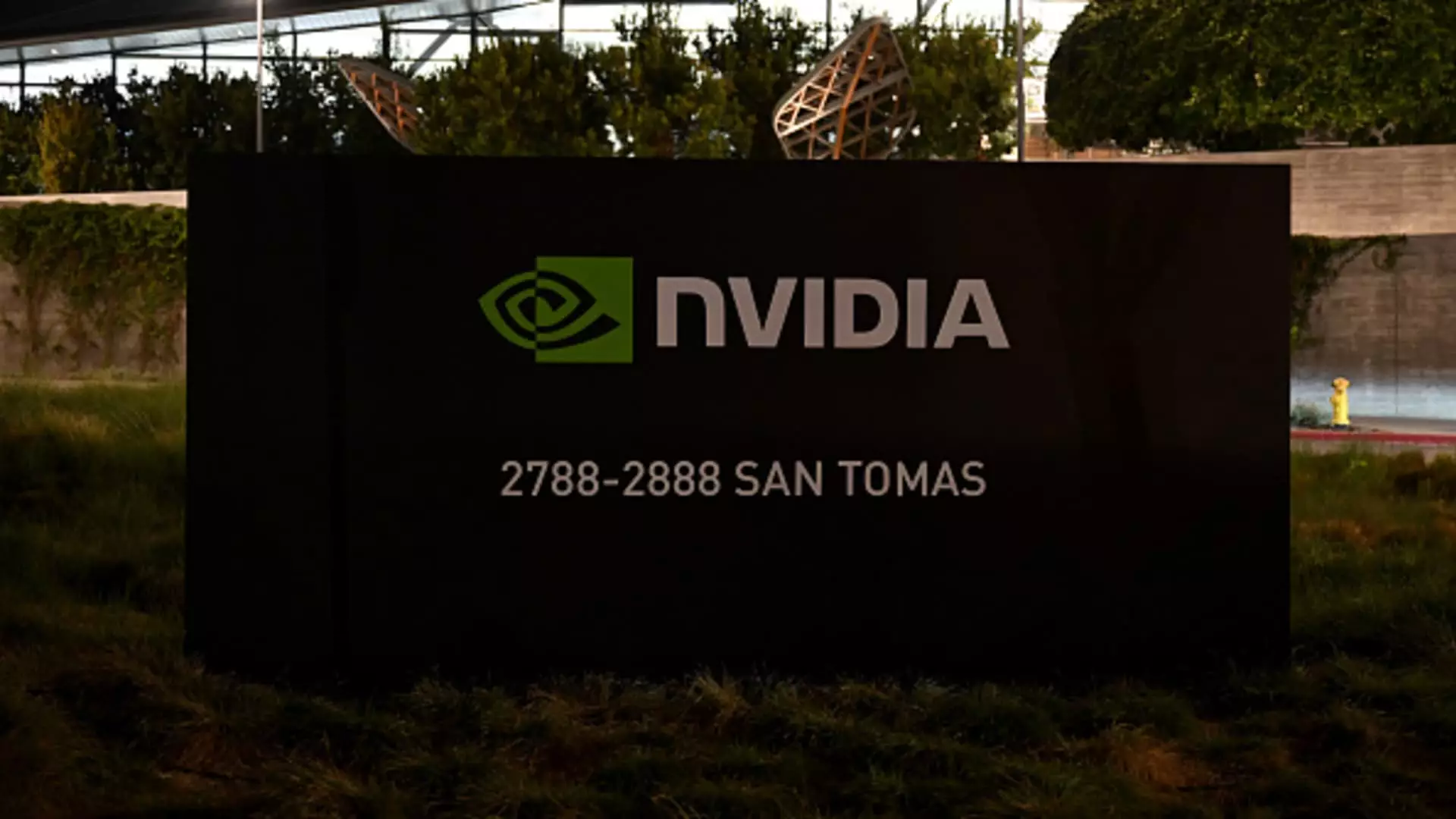In a significant moment for the artificial intelligence (AI) sector, Nvidia CEO Jensen Huang recently sparked renewed enthusiasm during his address at the Goldman Sachs Communacopia + Technology Conference. Huang’s assertion that we are in the midst of a “computer revolution” highlights the transformative nature of generative AI, positioning it beyond mere technology to a vital skill set shaping new industries. His optimism set off a wave of investment interest, particularly within AI and semiconductor markets, signifying a potential recovery and growth trajectory for investors.
The striking prediction from Huang—that data centers represent a minimum $1 trillion opportunity—emphasizes the centrality of AI to future technology infrastructures. With companies increasingly relying on AI-driven applications, the stock market responded positively, as demonstrated by Nvidia’s shares jumping over 8%. This rally not only reflects investor confidence but also eases concerns stemming from the slow returns on AI investments seen in recent months. The broader semiconductor landscape, encompassing firms like Advanced Micro Devices (AMD), Broadcom, and Marvell Technology, experienced similar upswings, showcasing a collective optimism in this dynamic sector.
John Belton, a portfolio manager at Gabelli Funds, commented on the palpable excitement among investors, attributing it to Huang’s assurances about sustainability in growth for the foreseeable future, particularly through scaling manufacturing capacities. This sentiment underscores a vital pivot in strategic focus—while Nvidia remains a frontrunner, a plethora of hardware players stands to benefit from the escalating demand for AI technologies.
CFRA analyst Angelo Zino highlighted that companies engaged in hardware manufacturing are likely to be short-term beneficiaries as the market evolves through its initial build-out stage. Companies like AMD, which specializes in GPU technology, and foundational networking firms such as Broadcom and Marvell, are at the forefront of enhancing processing power. Micron Technology is also expected to thrive, driven by surging memory demand. These predictions advocate a diversified approach to investing in the AI landscape, suggesting the presence of multiple avenues for growth and capital gains.
Meanwhile, the recent unveiling of Apple’s iPhone 16, bolstered by enhancements tagged as “Apple Intelligence,” illustrates the ongoing commitment of tech giants to integrate AI into consumer products. Although some Wall Street analysts voiced reservations over the upgrades, Zino remains unfazed, citing Apple’s potential leadership in AI-driven devices and personal assistants. The anticipated adoption of the Vision Pro headset further underscores a shift towards AI-centric user interfaces that may redefine consumer engagement.
Additionally, companies like Dell are expected to leverage their enterprise solutions to reinforce market standing as profit margins are projected to improve. This trend signifies that major players in the tech ecosystem are preparing to capitalize on the robust growth trajectories driven by AI advancements.
Beyond the Horizon: The Concern of Overvaluation
Despite the heightened enthusiasm surrounding AI investments, there are underlying concerns reminiscent of past market bubbles, particularly the burst of the dotcom bubble in the early 2000s. Mark Malek, chief investment officer at SiebertNXT, warns that while the AI craze is invigorating the market, it is critical to remain cautious—potential overvaluation risks lurk, especially among new entrants in the AI space.
Malek underscores the importance of established tech giants like Microsoft, Alphabet, and Amazon in navigating the AI landscape, yet he also notes that some of the most significant innovations are occurring outside the public eye, primarily within private companies. This creates a dual narrative where both public and private sectors are vying for competitive advantage; however, investors should be discerning, separating fleeting trends from sustainable business models.
As we edge into an era defined by AI’s omnipresence, the forecasts around its potential for reshaping industries wield immense influence over investment strategies. With leaders like Nvidia setting optimistic benchmarks and various firms poised to harness emerging technologies, the AI landscape is brimming with opportunities. However, a balanced approach—recognizing both potential gains and pitfalls—remains crucial for investors looking to navigate this transformative epoch.

